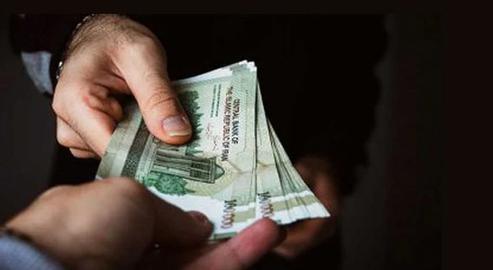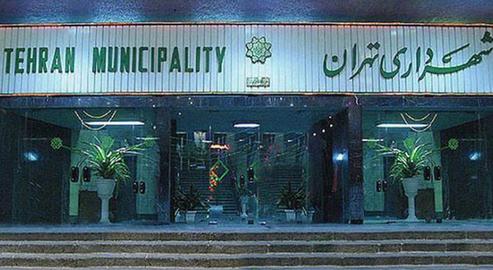A ground-breaking new study by the transparency initiative Iran Open Data has shed light on the role of bribery – otherwise known as “under-the-table”, “tea money”, “colleagues’ share” or “sweets” – in Iranian public life.
The report, entitled Bribery Quotes in Iran, focuses on how commonplace bribery has become in Iranian political and administrative bodies. It also attempts to establish what the going rates are for different services, based on the information available.
Which Institutions are Most Prone to Bribery Corruption?
A survey by Iran Open Data asked hundreds of Iranians about their first-hand experiences of paying bribes to different institutions. In total, 13 percent of respondents said they had resorted to bribery in their past dealings with municipal officials, 11 percent with the police, nine percent with the courts, seven percent with the tax office and six percent with the National Organization for Civil Registration.
The findings appeared to partly corroborate those of previous studies on bribery in Iran. One report, published in April 2018 by Transparency and Justice Watch – a Persian-language campaign under the supervision of Iranian politician Ahmad Tavakoli – involved a survey of 400 people in Tehran.
"In terms of the perception of corruption in organizations,” the authors concluded, “the highest level was related to municipalities, the brokers and intermediaries of organizations and officials, customs and tax offices, and banks. The lowest perceptions of corruption were in charities, schools, the press, and the registry office.” Notably, though, this report did not address the perceived extent of bribery culture in law enforcement agencies.
Iran Open Data’s report found that within municipalities, the main reasons people paid bribes were for construction permits, property change-of-use permission, renovations or to smooth over any previous violations they had committed.
Many people had paid bribes to the police, meanwhile, to avoid penalties for traffic offences such as speeding or not wearing a seatbelt, or on being found with drugs in their possession. A handful had paid members of the Revolutionary Guards or the Basij to avoid being pursued for a more serious offence – or even to judges, to influence the outcome of a case. On the flipside, the report also noted that some Iranian burglary victims had bribed the police “to increase the possibility of their identifying the thief”.
The sheer ubiquity of bribery in Iranian public life was also laid bare in the report. People had bribed doctors’ secretaries for a choice appointment time, the civil registration office for an ID card or to register an unconventional baby name, and to universities for better test scores. Business owners, meanwhile, reported bribing government procurement agents for contracts and customs officials for the value of their imported goods to be underestimated.
Gold Coins, Opium, and Sex as Bribes
A key finding in Iran Open Data’s report was the diverse nature of the bribes people said they had paid. The size of cash bribes varied wildly, from hundreds of thousands of tomans – the most common amount, usually for the smallest of administrative favors – up to a billion. About 11 percent of people had paid 10 to 20 million tomans [$460 to $830] in bribe money, while nine percent had paid 50 million tomans [$2,000] or more.
In the case of bribery for government contract provision, the report found that the bribe money was usually calculated as a percentage of the value of the future goods and services to be sold. In general, it found, the bribe was one to ten percent of the total value of the contract.
There was also an array of “non-cash” bribes reported. Gold coins – between one and 25, depending on the service required – were the most common, but as the report noted: “Non-cash bribery covers a wide range of items.”
These reportedly included home appliances and white goods such as side-by-side refrigerators, the deeds to plots of land, sheep, and consumer items such as iPhones, handmade carpets, spices or saffron. But other, darker arrangements were also reported by the respondents, such as a pound of opium, or sex, being offered in exchange for a service.
The report’s authors noted that the “degree of flexibility and bargaining power” varied on a case-by-case basis, depending on “the financial situation of the bribe-giver and the bribe-taker, as well as their greed, need and recklessness”.
Corruption in organizations under the leadership
Bureaucratic institutions in the Islamic Republic are extremely vulnerable to corruption due to their lack of financial and administrative transparency. This goes for the massive, shadowy entities under the control of the Supreme Leader, the military and the Revolutionary Guards as well as those with physical offices in Iran’s streets and bazaars.
The IRGC’s Khatam al-Anbia Headquarters, for instance, has a stranglehold on Iran's construction, industrial, mining, and oil and gas industries without its detailed financial statements being made public. Iran Open Data’s report found the biggest bribes were paid for government contracts and tenders, meaning it is likely that the amount of dirty money flowing into this and other parastatal conglomerates far outstrips that paid at the local level.
Iran’s own government appears to recognize this. In its seasonal economic survey, the Chamber of Commerce bribery listed “Corruption and abuse of office and position” as the fifth most damaging impediment to business in Iran.
Related coverage:
Parliament Lets Tehran’s Mayor off the Hook in Corruption Scandal
Official Report Lays Bare Endemic Corruption in Iran’s Medical Sector
visit the accountability section
In this section of Iran Wire, you can contact the officials and launch your campaign for various problems


























comments